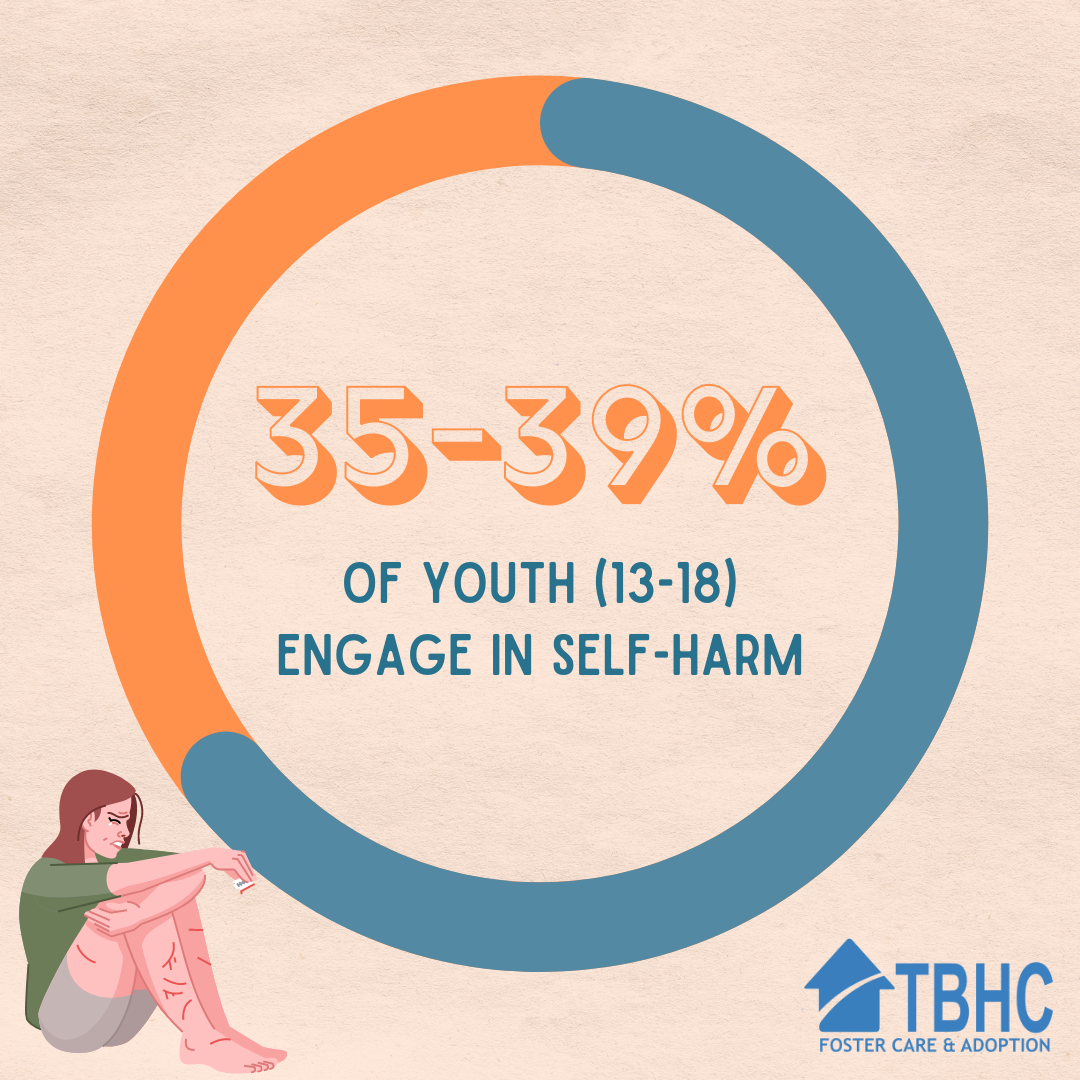Foster care is a very difficult place for children and youth to find themselves in. The feelings and experiences can be overwhelming. It is not uncommon for some youth in foster care engage in some type of self-harming behavior. Although the number is difficult to track, it is estimated that 35-39% of youth between ages 13-18 engage in self-injury. This is in comparison to the general population rates of an estimated 27%. The majority of those who self-harm are typically middle school to high school aged but there have been children as young as 6 and 7 show signs of intentionally harming themselves.

Self-harm or self-injury can be a scary concept especially if someone you care about is engaging in it. However, self-harm is often misunderstood and is a taboo subject that many people are uncomfortable addressing. It’s important to understand the facts about self-injury.
Not a mental illness but an unhealthy coping skill
Self-injury is not a mental illness but can be a sign of underlying disorders such as anxiety, depression, PTSD, eating disorders, and psychosis. It is an unhealthy coping skill that people can develop when emotions are difficult to deal with and unable to speak about. People most at risk are those who have experienced abuse or trauma. Self-harm does not always mean someone is suicidal but can be associated with suicidal thoughts. Oftentimes self-harm starts with overwhelming emotions such as anger, shame, sadness, or emotional pain.
When someone is having a difficult time processing their feelings they might turn to self-harm as a way of distracting themselves, to control something in their environment, to punish themselves, or to feel something if they are experiencing numbness. Some studies have discovered that self-injury can stimulate endorphins in the body which is a natural pain killer and can temporarily lift mood. It’s important to remember that self-harm typically starts as a way to cope with painful feelings.
Signs of Self-Harm
There are a variety of ways that someone might self-harm. This could include cutting, scratching, burning, hitting self, scab picking, pulling hair, etc. The most common areas to self-harm are the arms, legs, and stomach.
Signs that someone might be self-injuring (keep in mind that these are often in combination with each other):
- Many suspicious scars on arms, legs or other parts of the body
- Keeping sharp objects on hand
- Being secretive & defensive when questioned
- Wearing long sleeves or pants when not weather appropriate
- Difficulties with interpersonal relationships
- Behavioral instability
- Feelings of helplessness/worthlessness
- Distancing self from others
Although self-injury is typically viewed as an unhealthy coping skill. It can have dangerous or long-lasting effect such as scars, infection, medical emergencies, guilt, shame, addiction to behavior, increased feelings of worthlessness, and accidental death. Self-injury should not be taken lightly.
Here’s what you can do if someone you know is engaging in self-harm:
- Be a nonjudgmental support
- Encourage them to seek help from professionals: counseling, psychiatric help to address underlying causes
- Call or text a crisis hotline (listed below)
- Seek medical attention if needed
Show love and be there
As a parent, do not shame or guilt your child if you discover they are engaging in self-harm. Recognize the feelings that might have led to the behavior. Do not do body checks as they can increase shame which in turn reinforces the behavior. Instead build on the relationship so that they will feel safe to come to you to share their feelings. Seek counseling for your child and a psychiatrist if needed. Help them find healthier coping skills such as journaling, using breathing exercises, listening to music, going for a walk, talking with a trusted person, using fidget items, or using art to express themselves. Be present and show them that you love them and will be there for them.
Recovering from self-injury can take time as a person learns new coping techniques and deals with the feelings that led to the behaviors. For those who have engaged in it for an extended period of time, the urge to self-harm can take a long time to go away and may resurface in times of stress. The best thing you can do for a person that self-harms is be there and support them in their journey to recovery.
If you or someone you love are having thoughts of self-harm or suicide you can text or call the following hotlines:
Text HOME to 741741 to connect to a crisis counselor 24/7
National Suicide Prevention Lifeline at 800-273-8255
Written by: Staci Beck
References:
Crisis Text Line www.crisistextline.org
National Alliance on Mental Illness www.nami.org




